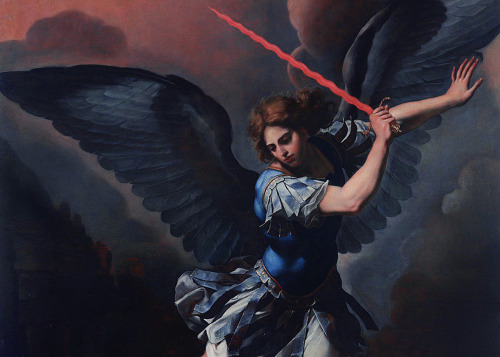
just a blog to keep my research organized.(‘all spoke to her, and she answered.’ —anne morrow lindbergh)
541 posts
Henrietta Maria (25 November 1609 10 September 1669) Was Queen Of England, Scotland, And Ireland As The

Henrietta Maria (25 November 1609 – 10 September 1669) was Queen of England, Scotland, and Ireland as the wife of Charles I. She was mother of his two immediate successors, Charles II and James II and VII. Contemporaneously, by a decree of her husband, she was known in England as Queen Mary, but did not like this name and signed her letters “Henriette R”.
-
 marquisevonobst liked this · 1 year ago
marquisevonobst liked this · 1 year ago -
 smoothrools liked this · 2 years ago
smoothrools liked this · 2 years ago -
 bunnytaff liked this · 2 years ago
bunnytaff liked this · 2 years ago -
 peri-helia liked this · 2 years ago
peri-helia liked this · 2 years ago -
 thedumbbrunette0-0 liked this · 2 years ago
thedumbbrunette0-0 liked this · 2 years ago -
 lordlykisses liked this · 2 years ago
lordlykisses liked this · 2 years ago -
 winterhalters reblogged this · 2 years ago
winterhalters reblogged this · 2 years ago -
 catherinebronte liked this · 2 years ago
catherinebronte liked this · 2 years ago -
 the-perdita reblogged this · 3 years ago
the-perdita reblogged this · 3 years ago -
 comicfan100699 liked this · 3 years ago
comicfan100699 liked this · 3 years ago -
 dragonmartellstark liked this · 3 years ago
dragonmartellstark liked this · 3 years ago -
 marimar101 liked this · 3 years ago
marimar101 liked this · 3 years ago -
 redladydeath liked this · 3 years ago
redladydeath liked this · 3 years ago -
 volfoss liked this · 3 years ago
volfoss liked this · 3 years ago -
 catherinedefrance liked this · 4 years ago
catherinedefrance liked this · 4 years ago -
 elizabeth-hassell liked this · 4 years ago
elizabeth-hassell liked this · 4 years ago -
 ellynneversweet liked this · 4 years ago
ellynneversweet liked this · 4 years ago -
 streaksofmoonlight reblogged this · 4 years ago
streaksofmoonlight reblogged this · 4 years ago -
 lucreziaborgia reblogged this · 4 years ago
lucreziaborgia reblogged this · 4 years ago -
 skeins-archive reblogged this · 4 years ago
skeins-archive reblogged this · 4 years ago -
 costumedufilm reblogged this · 4 years ago
costumedufilm reblogged this · 4 years ago -
 vinceaddams liked this · 4 years ago
vinceaddams liked this · 4 years ago -
 valengory1234 liked this · 4 years ago
valengory1234 liked this · 4 years ago -
 nellygwyn reblogged this · 4 years ago
nellygwyn reblogged this · 4 years ago -
 johngs-world liked this · 4 years ago
johngs-world liked this · 4 years ago -
 doyoufeellikeachainstore reblogged this · 4 years ago
doyoufeellikeachainstore reblogged this · 4 years ago -
 stolenpostit liked this · 4 years ago
stolenpostit liked this · 4 years ago
More Posts from Skeins-archive
Okay, I don’t usually add to these bcus they’re fandom-related , but given this one is making actual historic claims ....
1) To say ‘even if we ignore Chapuys’ claims’ and then cite the example of the christening cloth .... that comes from Chapuys. And no other. Idk if anon is aware of that , but ... yeah. Something to think about .
2) It wasn’t her coat of arms (her coat of arms was a falcon, but that was her family’s heraldry), it was actually embroidery that has been attributed to Elizabeth Howard (her mother) most recently by historians , that depicted what you mention :
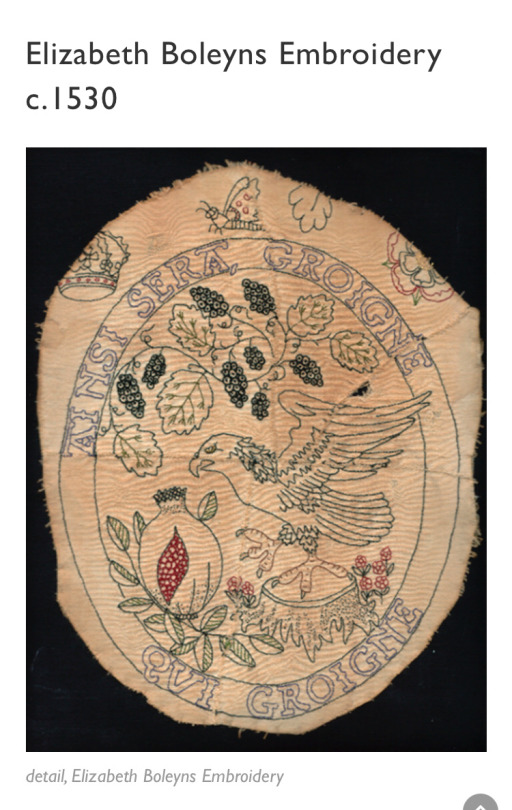
Here are her coat of arms
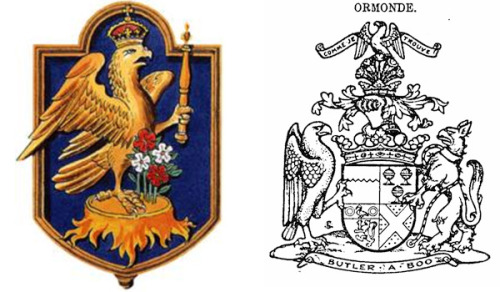
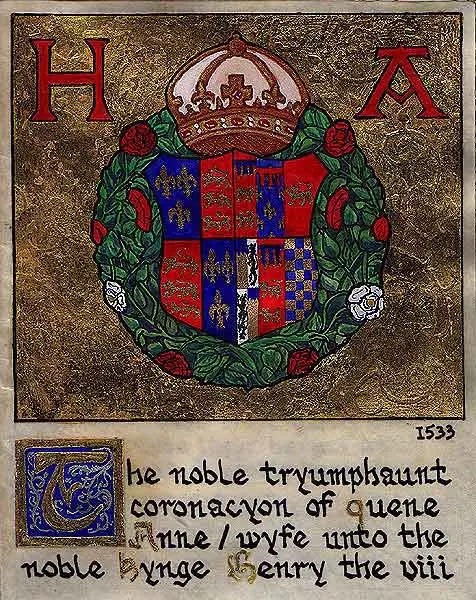
No pomegranate , as you can see. To have put that in actual official heraldry would have been very odd .
3) If you don’t like Anne Boleyn, that is of course , your prerogative. But it is true that the bulk of the contemporary reports about her that are negative come from Chapuys. There are some from other diplomats that are also not positive , but his are where there is the highest volume of negative reports about her. Whether or not you take them at face value , totally disregard them, or somewhere in between (my personal recommendation) is totally up to you.
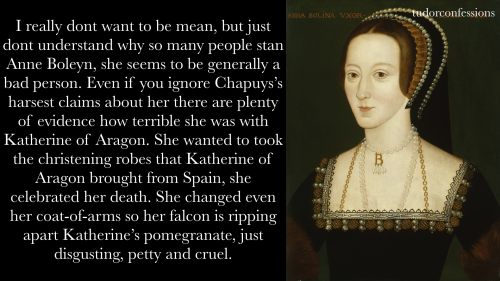

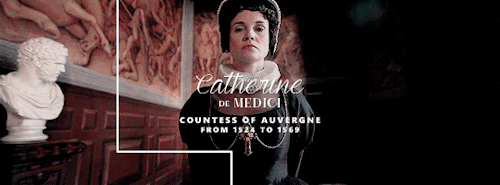
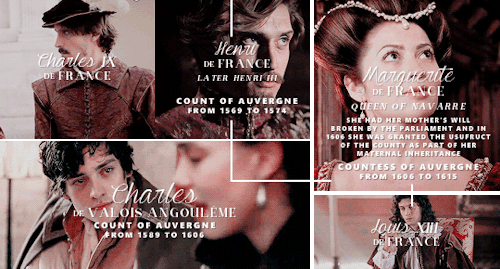
The succession to the county of Auvergne, throughout the 16th and in the early 17th century, encapsulates a series of dynastic conflicts. Catherine de Medici inherited the county from her childless maternal aunt, Anne, duchess of Albany, and then offered it to her son Henri, then duke of Anjou, in 1569. Her daughter Marguerite challenged her will after her death, asserting that as the only surviving child of her late mother, she should have been the recipiendary of the county, which was at the time the property of her bastard nephew, Charles de Valois-Angoulême, only surviving child of her late brother Charles IX and adoptive child of Henri III. She was supported in her efforts by her former husband, Henri IV, who had interests in her winning her case. The new king viewed the matter as the perfect way to tie the soon to be extinguised royal house of Valois to the Bourbon family, by suggesting that Marguerite, childless and divorced, made the Dauphin, future Louis XIII, her heir in the succession. She was eventually granted the usufruct, in large part because her bastard nephew had himself been condemned for treason after actively plotting with his half-sister Henriette d'Entragues and Spain to have the Dauphin replaced by his bastard brother born from the marchionness.

The Vision of Saint Jerome, Giovanni Battista Langetti , c. 1660, Cleveland Museum of Art: European Painting and Sculpture
Jerome (c. AD 347–420) studied Greek and Latin literature in Rome, but eventually pursued theology, perceiving his conduct as corrupt and sinful. Around AD 374, Jerome had a vision of the Last Judgment in which an angel called him to task for his transgressions. Jerome then withdrew from society, learned Hebrew, and studied the Gospels, which led to his influential translations of the Bible. Langetti here follows a convention by depicting Jerome’s vision after he retreated from the world. Working in the northern Italian port of Genoa, Langetti absorbed Caravaggio’s impact, seen in the composition’s naturalistic bodies and dramatic light. Size: Framed: 238 x 187 x 13 cm (93 11/16 x 73 5/8 x 5 1/8 in.); Unframed: 200.2 x 149.2 cm (78 13/16 x 58 ¾ in.) Medium: oil on canvas
https://clevelandart.org/art/1951.334



